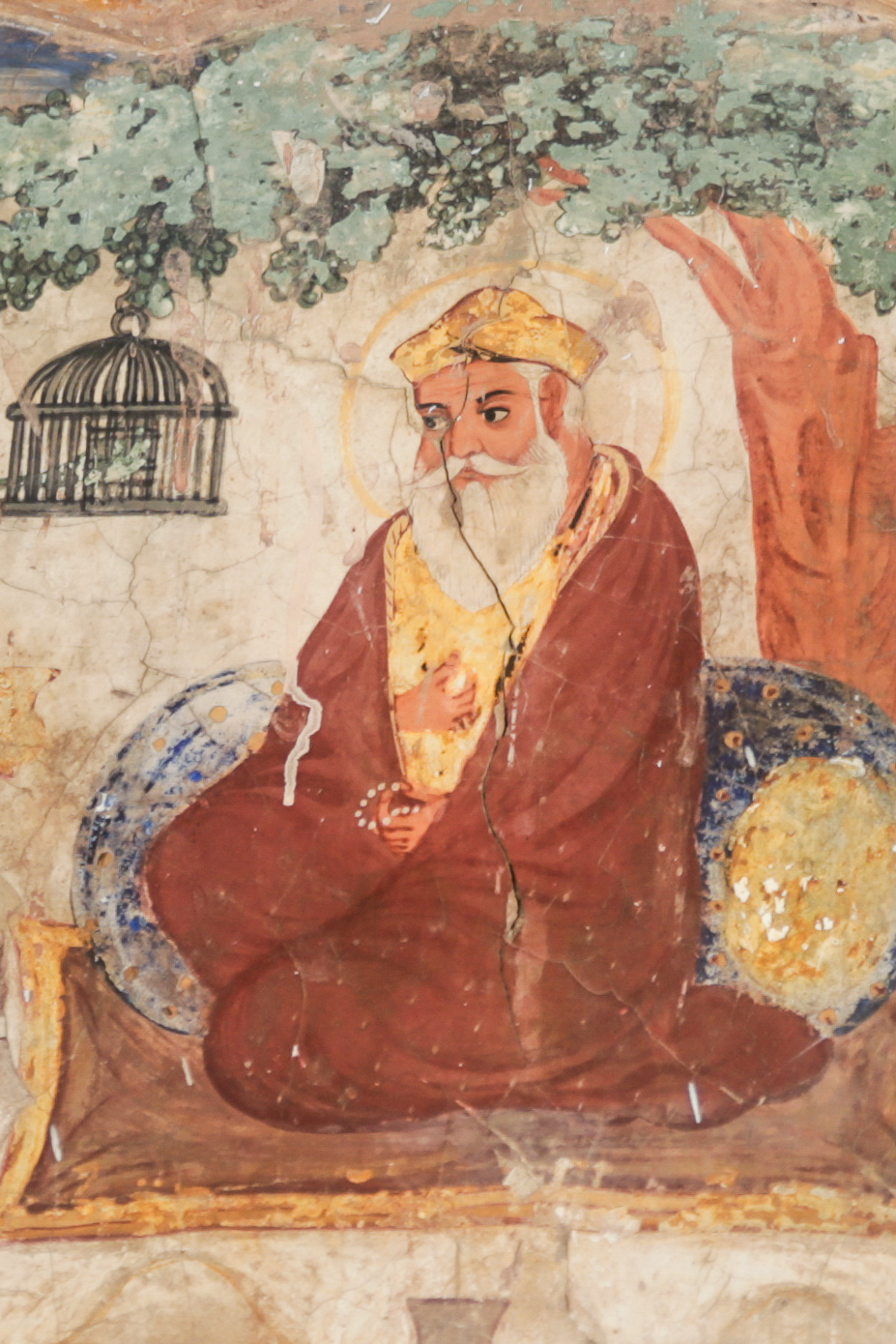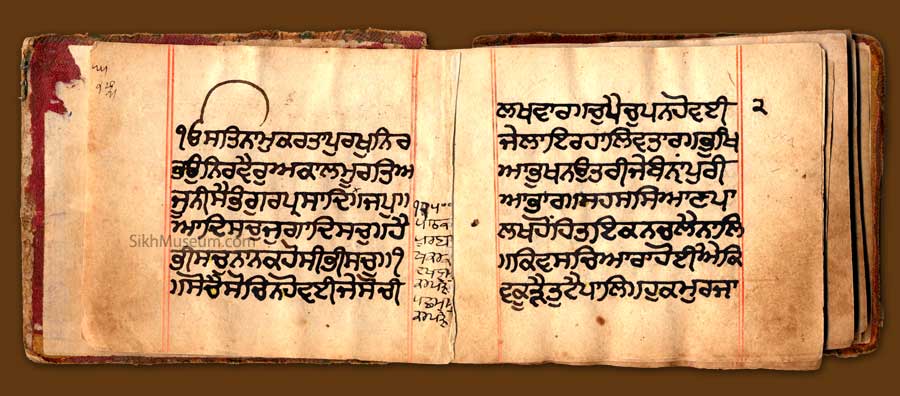|
Sarbat Da Bhala
Sarbat da bhala (Punjabi: ਸਰਬੱਤ ਦਾ ਭਲਾ ; ''sarabata dā bhalā'') is the final term in the Sikh prayer called the Ardas. The term outlines one of the most important of Sikh principles and is a point that is repeated in the Sikh Scriptures. The Sikh concept of ''sarbat da bhala'' which means "blessings for everyone" or literally "may everyone prosper".Kaur, Jagroop. “THE CONCEPT OF PEACE AND THE GURU GRANTH SAHIB.” ''The Indian Journal of Political Science'', vol. 66, no. 3, 2005, pp. 649–60. ''JSTOR'', http://www.jstor.org/stable/41856155. Accessed 5 Sep. 2022. This statement is repeated by all practising Sikhs at least twice daily as part of their Nitnem (daily prayers). This concept is central to Sikhism and forms a very important and essential role in the religious philosophy of the Sikh Gurus. The Ardas ends with the line: To put this in very concise and clear language, the term invokes the Sikh to request, pray and ask the Almighty for the well-b ... [...More Info...] [...Related Items...] OR: [Wikipedia] [Google] [Baidu] |
Gurmukhi
Gurmukhī ( pa, ਗੁਰਮੁਖੀ, , Shahmukhi: ) is an abugida developed from the Laṇḍā scripts, standardized and used by the second Sikh guru, Guru Angad (1504–1552). It is used by Punjabi Sikhs to write the language, commonly regarded as a Sikh script, Gurmukhi is used in Punjab, India as the official script of the Punjabi language. While Shahmukhi script is used in Punjab, Pakistan as the official script. The primary scripture of Sikhism, the Guru Granth Sahib, is written in Gurmukhī, in various dialects and languages often subsumed under the generic title '' Sant Bhasha'' or ''saint language'', in addition to other languages like Persian and various phases of Indo-Aryan languages. Modern Gurmukhī has thirty-five original letters, hence its common alternative term ''paintī'' or "the thirty-five," plus six additional consonants, nine vowel diacritics, two diacritics for nasal sounds, one diacritic that geminates consonants and three subscript ch ... [...More Info...] [...Related Items...] OR: [Wikipedia] [Google] [Baidu] |
Sikh
Sikhs ( or ; pa, ਸਿੱਖ, ' ) are people who adhere to Sikhism (Sikhi), a monotheistic religion that originated in the late 15th century in the Punjab region of the Indian subcontinent, based on the revelation of Guru Nanak. The term ''Sikh'' has its origin in the word ' (), meaning 'disciple' or 'student'. Male Sikhs generally have ''Singh'' ('lion'/'tiger') as their last name, though not all Singhs are necessarily Sikhs; likewise, female Sikhs have ''Kaur'' ('princess') as their last name. These unique last names were given by the Gurus to allow Sikhs to stand out and also as an act of defiance to India's caste system, which the Gurus were always against. Sikhs strongly believe in the idea of "Sarbat Da Bhala" - "Welfare of all" and are often seen on the frontline to provide humanitarian aid across the world. Sikhs who have undergone the '' Amrit Sanchar'' ('baptism by Khanda'), an initiation ceremony, are from the day of their initiation known as Khalsa, and they mu ... [...More Info...] [...Related Items...] OR: [Wikipedia] [Google] [Baidu] |
Scripture
Religious texts, including scripture, are texts which various religions consider to be of central importance to their religious tradition. They differ from literature by being a compilation or discussion of beliefs, mythologies, ritual practices, commandments or laws, ethical conduct, spiritual aspirations, and for creating or fostering a religious community. The relative authority of religious texts develops over time and is derived from the ratification, enforcement, and its use across generations. Some religious texts are accepted or categorized as canonical, some non-canonical, and others extracanonical, semi-canonical, deutero-canonical, pre-canonical or post-canonical. "Scripture" (or "scriptures") is a subset of religious texts considered to be "especially authoritative", revered and "holy writ", "sacred, canonical", or of "supreme authority, special status" to a religious community. The terms ''sacred text'' and ''religious text'' are not necessarily interchangeable ... [...More Info...] [...Related Items...] OR: [Wikipedia] [Google] [Baidu] |
Nitnem
''Nitnem'' (Punjabi: ਨਿਤਨੇਮ) (literally ''Daily Routine'') is a collection of Sikh hymns (''Gurbani'') to be read minimally 3 different times of the day. These are mandatory and to be read by every Amritdhari Sikh as expressed in the Sikh Rehat Maryada. Optionally additional prayers may be added to a Sikh's ''nitnem''. There are five hymns ''( Five Banis)'' to be done during '' Amrit Vela'' (early morning), the '' Rehras Sahib'' hymn for the evening and ''Kirtan Sohila'' for the night. The morning and evening prayers should be followed by an '' Ardaas''. Morning Prayers * Japji Sahib * Jaap Sahib * Tav-Prasad Savaiye * Chaupai Sahib * Anand Sahib As per the Sikh Code of Conduct, Sikhs are only required to recite Japji Sahib, Jaap Sahib, & the Ten Sawayyas in the morning. Many Sikhs, including those who follow the lifestyle of the Damdami Taksal & AKJ, believe that Chaupai Sahib & Anand Sahib are also required in the morning prayers. Sometimes this is refer ... [...More Info...] [...Related Items...] OR: [Wikipedia] [Google] [Baidu] |
Sikhism
Sikhism (), also known as Sikhi ( pa, ਸਿੱਖੀ ', , from pa, ਸਿੱਖ, lit=disciple', 'seeker', or 'learner, translit= Sikh, label=none),''Sikhism'' (commonly known as ''Sikhī'') originated from the word ''Sikh'', which comes from the Sanskrit root ' meaning "disciple", or ' meaning "instruction". Singh, Khushwant. 2006. ''The Illustrated History of the Sikhs''. Oxford University Press. . p. 15.Kosh, Gur Shabad Ratnakar Mahan. https://web.archive.org/web/20050318143533/http://www.ik13.com/online_library.htm is an Indian religion that originated in the Punjab region of the Indian subcontinent,"Hinduism, Buddhism, Jainism and Sikh originated in India." around the end of the 15th century CE. It is the most recently founded major organized faith and stands at fifth-largest worldwide, with about 25–30 million adherents (known as Sikhs) .McLeod, William Hewat. 2019 998 Sikhism developed from the spiritual teachings of Guru Nanak (1469–1539), the faith's first ... [...More Info...] [...Related Items...] OR: [Wikipedia] [Google] [Baidu] |
Sikh Gurus
The Sikh gurus (Punjabi: ਸਿੱਖ ਗੁਰੂ) are the spiritual masters of Sikhism, who established this religion over the course of about two and a half centuries, beginning in 1469. The year 1469 marks the birth of Guru Nanak, the founder of Sikhism. He was succeeded by nine other human gurus until, in 1708, the '' Guruship'' was finally passed on by the tenth guru to the holy Sikh scripture, Guru Granth Sahib, which is now considered the living Guru by the followers of the Sikh faith. Etymology and definition ''Guru'' (, ; sa, गुरु, Punjabi: ਗੁਰੂ, IAST: ''guru'') is a Sanskrit term for a "teacher, guide, expert, or master" of certain knowledge or field. Bhai Vir Singh, in his dictionary of Guru Granth Sahib describes the term Guru as a combination of two separate units: "Gu;(ਗੁ)" meaning darkness and "Rū;(ਰੂ)" which means light. Hence, Guru is who brings light into darkness or in other words, the one who enlightens. Bhai Vir Singh's defi ... [...More Info...] [...Related Items...] OR: [Wikipedia] [Google] [Baidu] |
Gurbani
Gurbani ( pa, ਗੁਰਬਾਣੀ) is a Sikh term, very commonly used by Sikhs to refer to various compositions by the Sikh Gurus and other writers of Guru Granth Sahib. In general, hymns in the central text of the Sikhs, the Guru Granth Sahib, are called ''Gurbani''. Among Amritdhari Sikhs, a few texts from Dasam Granth which are read as Nitnem, like ''Tav-Prasad Savaiye'' and ''Chaupai'', are also considered ''Gurbani''. In Adi Granth, Gurbani is a sound which comes directly from the Supreme and the text is a written form of the same in worldly language and scripts. It is also called ''Guru´s Bani''. Gurbani are explanations of qualities of the Primal Lord and Soul which a Sikh should comprehend and with which they can attain the supreme state. Sikh historical writings, unauthentic writings or apocryphal compositions written under the names of Sikh Gurus and other writings by Sikhs are not considered Gurbani and are referred to as ''Kachi Bani'' (ਕੱਚੀ ਬਾਣ� ... [...More Info...] [...Related Items...] OR: [Wikipedia] [Google] [Baidu] |
Sri Guru Granth Sahib
The Guru Granth Sahib ( pa, ਗੁਰੂ ਗ੍ਰੰਥ ਸਾਹਿਬ, ) is the central holy religious scripture of Sikhism, regarded by Sikhs as the final, sovereign and eternal Guru following the lineage of the ten human gurus of the religion. The Adi Granth ( pa, ਆਦਿ ਗ੍ਰੰਥ), its first rendition, was compiled by the fifth guru, Guru Arjan (1564–1606). Its compilation was completed on 29 August 1604 and first installed inside Golden Temple in Amritsar on 1 September 1604. Baba Buddha was appointed the first Granthi of the Golden Temple. Shortly afterwards Guru Hargobind added Ramkali Ki Vaar. Later, Guru Gobind Singh, the tenth Sikh guru, added hymns of Guru Tegh Bahadur to the Adi Granth and affirmed the text as his successor. This second rendition became known as the Guru Granth Sahib and is also sometimes referred to as the Adi Granth. [...More Info...] [...Related Items...] OR: [Wikipedia] [Google] [Baidu] |






